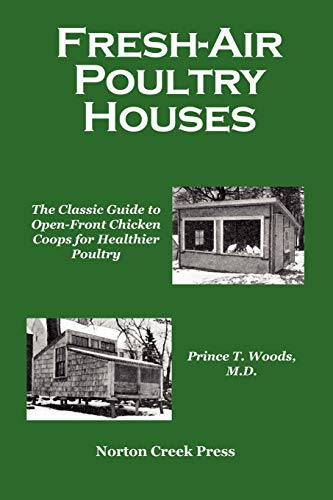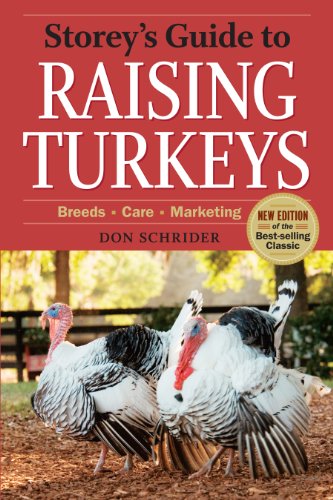
Author: Prince T. Woods
Price: $17.95
Category:Industries
Publication Date:2008-10-14T00:00:01Z
Pages:190
Binding:Paperback
ISBN:10:097217706X
ISBN:13:
Open-Front Chicken Coops Are Healthier, Summer and Winter To stay healthy, your chickens need plenty of ventilation–probably more than they’re getting today. This was discovered over 100 years ago, but has been largely forgotten. Today’s small-flock chicken coops tends to be dank, dark, and smelly. Chickens, like miners’ canaries, are easily harmed by poor air quality. Wet litter breeds disease. Darkness forces chickens, like parrots, to be artificially inactive. “Dank, dark, and smelly” is a deadly combination! Closed chicken houses are so harmful that knocking out a wall can cause an immediate improvement, even in winter (there’s an interesting case study of this in Chapter 2). Chickens, after all, have a thick coat of feathers to keep them warm, but are vulnerable to poor air quality and pathogens in the litter; and their unwillingness to eat in the dark means they can starve in the midst of plenty. An open-front coop during a Canadian winter. Note the snow on the ground. And in summer! Poor air circulation and a thick coat of feathers is hard on the chickens. It can easily kill them. Chickens are far more vulnerable to heat than cold. Fresh-Air Poultry Houses was written by Dr. Prince T. Woods, a noted poultry health expert. Dr. Woods describes not only his own poultry houses, but those of many of his clients, giving the book a breadth of experience that makes it a unique resource. This 1924 book is old-fashioned and a little eccentric, but in a good way. The Fresh-Air Revolution The principles Woods describes in his book achieved total victory at the time. Open-front poultry houses were not only the dominant type, they were the only type for many years (until the industry moved to the use of gigantic fans at the ends of poultry houses to provide even more ventilation than open-front housing!). The principles of open-front housing were taken to extremes in some parts of the country, with surprisingly good results. In California, chicken houses were so open that they didn’t have walls at all! Just a roof. This method was used as far north as Oregon in the Fifties, and worked at least as well as conventional houses. The improved air quality made up for the increased wind chill. While the large producers have consistently embraced the benefits of fresh air, small-flock owners gradually reverted to the kind of under-ventilated chicken coops that was common in the Nineteenth century. The need to keep baby chicks warm trains all of us to be obsess over providing warmth and exclude drafts, and it’s hard to do the opposite when the chicks are older. Even during the heyday of open-front housing, there was a saying that “the best chicks come out of the sorriest houses,” meaning that even experienced farmers couldn’t resist shutting up their houses too tightly, and that only a drafty, dilapidated house could prevent this from doing harm. Things are even worse now, since most people have never even heard of the benefits of fresh air for poultry. We’re proud to be able to bring the Fresh-Air Revolution into the Twenty-First Century.





